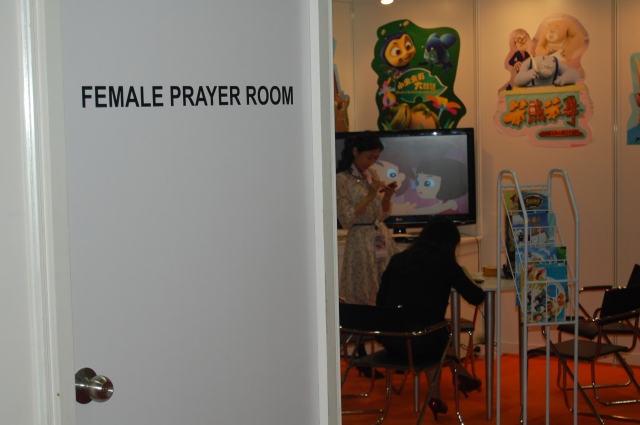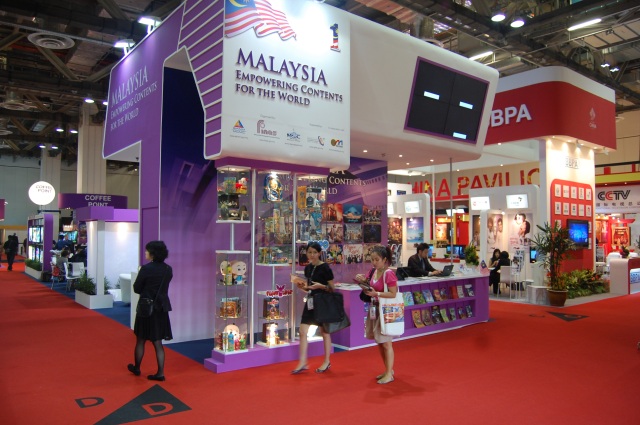The 12th Asia TV Forum (ATF) in Singapore opened with a 20 % increase in the attendance compared with last year. Undoubtedly, the growth reflects the importance of Asia as a fast emerging marketplace in the global television landscape. Over 3000 delegates from 950 companies talked shop over three days.
Here are some highlights and observations from this year’s ATF. I hope you enjoy the report; please get in touch if you want more information on any points raised.
ATF buyers from Asia comprise over 90 % of all buyers, but sellers range widely from Europe to the Americas and Middle East. Large delegations from countries like Italy, Spain and France occupied their own pavillions.
Finland had a strong representation with six production companies. The Favex (Finnish Audiovisual Export) stand was busy throughout the market. Finnish delegation overall was very satisfied with the number and quality of the contacts made during ATF.
Asia Raising
According to PriceWaterhouseCoopers the Asian entertainment and media market is predicted to have an annual growth of over 6 % until 2014. Total value of the market will then be 457 bn US$. The area also has the world’s biggest pay-TV market with 420 million subscribers and 570 million subs predicted by 2020; more than the rest of the world combined.
Asian market growth stems from the positive economical situation across the region. But Asian media industries also continue to enjoy generous production subsidies.
Governments support media industry
Singapore’s Media Development Authority (MDA) is well known for its financial support schemes, which continue to cover up to 40-50 % of the production budgets. MDA has simplified its funding schemes from 46 down to five, representing 62 million euros. The grants are applicable for content in broadcast, film, animation, music, interactive, games and publishing industries.
MDA announced at ATF its plans to build Mediapolis right in the city center. Mediapolis will be a physical ecosystem for the creatives and it will act as a test-bed and incubation center.
Malaysia is also going to establish a creative zone in the southern tip of the Malaysian peninsula. They will invite foreign companies to invest in the area in the hopes of benefiting from the proximity of Singapore. The British PInewood Studios, as well as Lego have already comitted to establish their presence in the area.
Focus on Malaysia
Malaysia was the most visible country at ATF this year. The official contingent was more than doubled from last year with more than 60 companies attending.
Datuk MD Afendi Datuk Hamdan, the chairman of the National Film Development Corporation (FINAS) told about plans to inject production subsisidies also for foreign companies in FINA’s quest to accelerate coproductions. To emphasize their commitment Datuk told participants that the new studio complex will house the world’s largest water tank used in feature film productions.
Malaysia produces annually some 40 feature films, most of them heavily subsidised by the government. Local production costs are low: one hour drama budgets start from as low as 20.-30.000 US $.
The role of the public funding, however, is a support for the actual production, not production development. Technical know how in Asia generally is very high but the originality of the ideas and storytelling still lag behind the western standards. Support for improving screen writing talent is especially needed in the region.
China goes online
Asia is a difficult area for foreigners to work in many respects. Western content in Chinese television has to be approved by the State Administration of Radio Film and Television. Getting the stamp of approval can be difficult for many smaller exporters.
Also the sheer size and diversity of the region pose challenges and some companies are looking for non-traditional platforms. For example, online video platforms in China have started to license foreign content and they often pay upfront for large program packages.
Recent studies show that Chinese are switching off linear TV in favour of online-viewing. Out of the country’s 420 million internet users, 265 million were watching online videos, reported China Internet Network Information Center.
Yoku is China’s leading online video company, attaining almost a quarter of the online ad revenue. Other television and movie portals are Sohu, Tudou, PPS, PPTV, Xunlei and QiYI.
Last month QIYI upgraded its brand and today it is one of the fastest growing independent online video companies. It is part of Baidu, China’s largest search engine, and it focuses on fully licensed, high definition, professionally produced content. It is ad funded and protected from piracy. Online platforms should seriously be considered as an alternative in entering the Chinese consumer market.
Asia adapts formats
Formats continue to be a strong genre. China’s Hunan TV and Korea have licensed TopGear from BBC Worldwide and it has been a great success. Two more seasons in Korea are in preproduction and it will be interesting to see if western broadcasters will license the Korean or Chinese versions of TopGear.
Another emerging format market is Vietnam, which recently bought the scripted format of Ugly Betty. It seems that especially long running scripted drama formats are on the rise in Asia not the least because Asian scriptwriting leaves a lot to desire for.
Other recent format deals are: Million Dollar Money Drop for Singapore, Minute to Win It for Malaysia and Hole in the wall for Cambodia. Also Idol, X-Factor, Master Chef, Amazing Race, Dances with the Stars and Top Model have had long pan-Asian deals in place.


